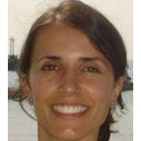Bulk Protein Crystallization
A special issue of Crystals (ISSN 2073-4352). This special issue belongs to the section "Biomolecular Crystals".
Deadline for manuscript submissions: closed (21 May 2021) | Viewed by 10309
Special Issue Editors
Interests: crystallization/precipitation processes; protein crystallization; calcium phosphates for biomedical applications; multiphase reactors; materials characterization
Special Issue Information
Dear Colleagues,
In the last decade, protein-based therapy has emerged as a safe and powerful tool for the administration of biopharmaceuticals. However, its manufacturing process, in particular the purification stage, remains costly. Unlike conventional protein purification techniques (i.e., chromatography), protein crystallization requires no costly equipment or consumables (e.g., resins) and can yield highly concentrated slurries of pure protein ready for further formulation in a single step.
Although its viability has been demonstrated, protein crystallization remains a largely empirical process due to the complexity of the underlying mechanisms and the unavailability of generalized crystallization strategies and scale-up criteria.
This is the motivation for this Special Issue, "Bulk Protein Crystallization ", which will gather the latest achievements in the search for better control and more rational design of protein crystallization processes. To this is added the recent advances in in situ monitoring and modelling. Studies on the influence of fluid dynamics on the process and crystal quality as well as on the specific crystallization of a given protein from a more realistic matrix (e.g., protein mixtures, clarified concentrated fermentation broths) are also crucial.
With the contribution of experts from chemical engineering, biotechnology and biochemistry, mathematics, and physics, this Special Issue is intended to contribute with robust and scalable protein crystallization strategies to boost its implementation in the pharmaceutical and biotechnological industry.
Reports on the following topics are welcome:
- Strategies to enhance the crystallization efficiency and decrease the process time;
- Strategies to enable the rapid establishment of phase diagrams;
- Advanced imaging, spectroscopy, and light scattering techniques;
- Modelling of protein crystallization processes (population balance modelling, etc.);
- Crystallization from “impure” protein solutions;
- Influence of hydrodynamics (mixing, shear, etc.) on protein crystallization.
Dr. Filipa Castro
Prof. Dr. Matthias Kind
Guest Editors
Manuscript Submission Information
Manuscripts should be submitted online at www.mdpi.com by registering and logging in to this website. Once you are registered, click here to go to the submission form. Manuscripts can be submitted until the deadline. All submissions that pass pre-check are peer-reviewed. Accepted papers will be published continuously in the journal (as soon as accepted) and will be listed together on the special issue website. Research articles, review articles as well as short communications are invited. For planned papers, a title and short abstract (about 100 words) can be sent to the Editorial Office for announcement on this website.
Submitted manuscripts should not have been published previously, nor be under consideration for publication elsewhere (except conference proceedings papers). All manuscripts are thoroughly refereed through a single-blind peer-review process. A guide for authors and other relevant information for submission of manuscripts is available on the Instructions for Authors page. Crystals is an international peer-reviewed open access monthly journal published by MDPI.
Please visit the Instructions for Authors page before submitting a manuscript. The Article Processing Charge (APC) for publication in this open access journal is 2600 CHF (Swiss Francs). Submitted papers should be well formatted and use good English. Authors may use MDPI's English editing service prior to publication or during author revisions.
Keywords
- Protein crystallization
- Bioseparation/downstream processing
- Systematic crystallization strategies
- In situ monitoring
- Hydrodynamics
- Modelling






